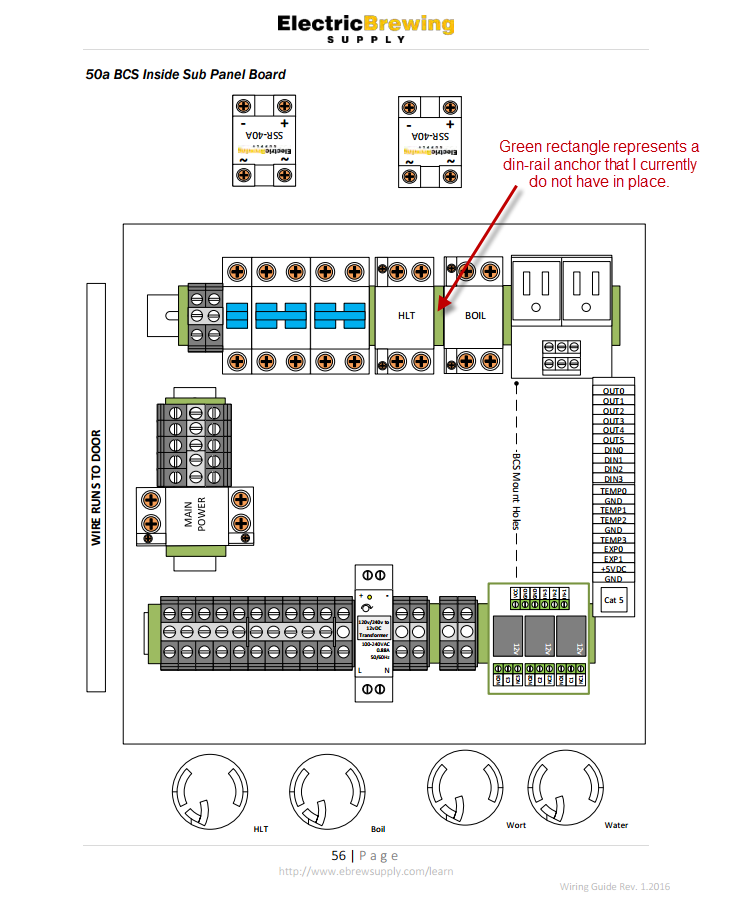BrewsByTones
Member
- Joined
- Feb 6, 2016
- Messages
- 15
- Reaction score
- 0
Looking for some help troubleshooting my build.
I have sourced the parts for this build and am having an issue with one of the 32a breakers and 25a contactors.
http://www.ebrewsupply.com/bcs-50a-2-elements-kit/
One of them is just fine, the heating elements fire and heat quickly and I've actually plugged both heating elements into the inlet that works and both are good, so I can pretty much eliminate anything 'north' of the heating element plugs.
Each time I turn the switch to the problematic heating element, the 32a breaker in the box sparks and flips and the 25a contactor actually goes bad - red indicator in the window.
The first time I did it, I already had the non-problematic heating element plugged in and on and when I turned on the second element not only did the 32a breaker in the box spark and flip + the 25a contactor went but the 50a breaker on my home breaker box tripped.
I have even turned the problematic element switch on with the bad contactor still connected and the 32a breaker in the box still sparks and flips. Not sure if that would happen because the contactor is bad or if that may indicate the 32a breaker has a bad connection or something to that extent.
Anyway, appreciate any feedback, trying to get my electrician friend back out to give it another look but before we tested the system with the peripherals plugged in he reviewed it and thought everything looked good and matched the schema, for what it's worth.
Cheers,
Tony
I have sourced the parts for this build and am having an issue with one of the 32a breakers and 25a contactors.
http://www.ebrewsupply.com/bcs-50a-2-elements-kit/
One of them is just fine, the heating elements fire and heat quickly and I've actually plugged both heating elements into the inlet that works and both are good, so I can pretty much eliminate anything 'north' of the heating element plugs.
Each time I turn the switch to the problematic heating element, the 32a breaker in the box sparks and flips and the 25a contactor actually goes bad - red indicator in the window.
The first time I did it, I already had the non-problematic heating element plugged in and on and when I turned on the second element not only did the 32a breaker in the box spark and flip + the 25a contactor went but the 50a breaker on my home breaker box tripped.
I have even turned the problematic element switch on with the bad contactor still connected and the 32a breaker in the box still sparks and flips. Not sure if that would happen because the contactor is bad or if that may indicate the 32a breaker has a bad connection or something to that extent.
Anyway, appreciate any feedback, trying to get my electrician friend back out to give it another look but before we tested the system with the peripherals plugged in he reviewed it and thought everything looked good and matched the schema, for what it's worth.
Cheers,
Tony











![Craft A Brew - Safale S-04 Dry Yeast - Fermentis - English Ale Dry Yeast - For English and American Ales and Hard Apple Ciders - Ingredients for Home Brewing - Beer Making Supplies - [1 Pack]](https://m.media-amazon.com/images/I/41fVGNh6JfL._SL500_.jpg)
















































